matplotlib-plot-style
2014-08-17 12:13
225 查看
style
1.绘制x=12.不同线宽
enumerate(Widths)
3.线型(实线,虚线,点划线)
linestyle
set_dashes
4.自动设置线颜色
5.点的显示形式
marker
markersize
markeredgecolor
markerfacecolor
6.柱状图及其填充
axes.bar
axes.bar( .5+i, 1, hatch='/', color='white', edgecolor='blue',)
x=1
code
#!/usr/bin/env python # -*- coding: utf-8 -*- import numpy as np import matplotlib import matplotlib.pyplot as plt #Data Y=np.linspace(0,1,12) X=np.ones(Y.size) #figure fig = plt.figure(figsize=(8,6), dpi=72, facecolor='white') axes = plt.subplot(111) #plot axes.plot( (1+0)*X, Y, linewidth=0.25, color='blue') plt.show()
Keypoints
axes.plot( (1+0)*X, Y, linewidth=0.25, color='blue')
X=[ 1. 1. 1. 1. 1. 1. 1. 1. 1. 1. 1. 1.]
Y=[ 0. 0.09090909 0.18181818 0.27272727 0.36363636 0.45454545
0.54545455 0.63636364 0.72727273 0.81818182 0.90909091 1. ]
Result
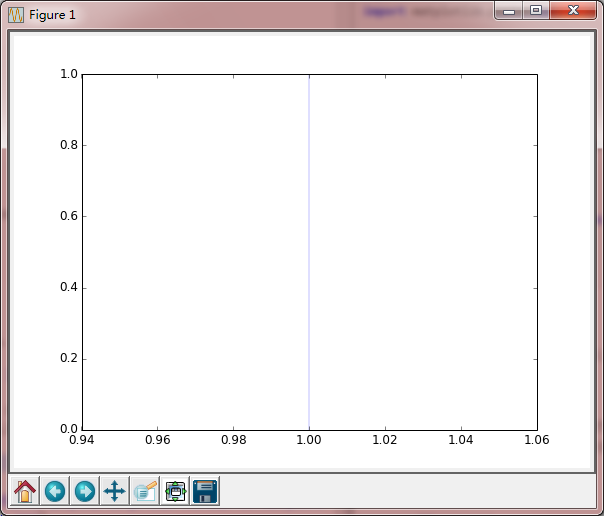
不同线宽
code
#!/usr/bin/env python # -*- coding: utf-8 -*- import numpy as np import matplotlib import matplotlib.pyplot as plt # Data to be represented Y = np.linspace(0,1,12) print Y X = np.ones(Y.size) print X W = [0.25,0.50,0.75,1,2,3,4,5,6,7,8] #linewidth print W # Actual plotting fig = plt.figure(figsize=(8,6), dpi=72, facecolor='white') axes = plt.subplot(111) for i,w in enumerate(W): axes.plot( (1+i)*X, Y, linewidth=w, color='blue') # X,Y axes lable axes.set_xlim(0,len(W)+1) axes.set_yticks([]) axes.set_xticks(np.arange(1,len(W)+1)) axes.set_xticklabels(['%.2f' % w for w in W]) plt.show()
Keypoints
for i,w in enumerate(W): axes.plot( (1+i)*X, Y, linewidth=w, color='blue')
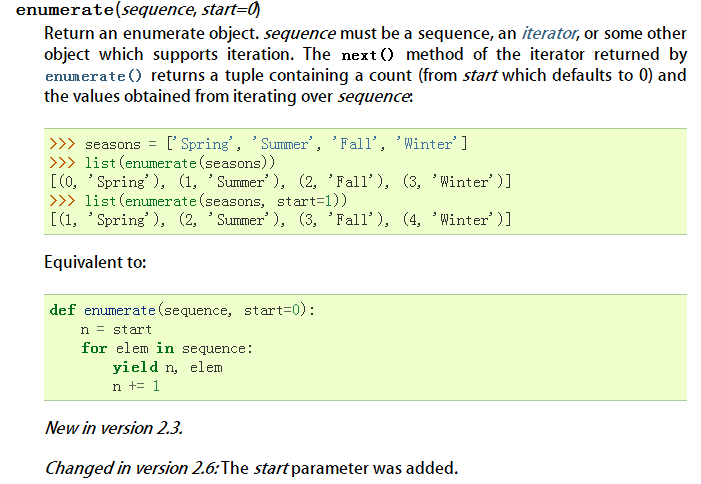
绘制12条直线,X=1,...X=12
Result
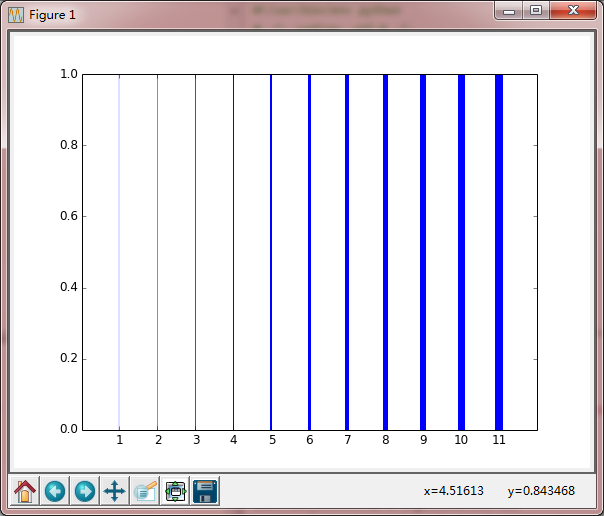
隐藏Y轴刻度,替换X轴标签后的图形

线型(实线,虚线,点划线)
code
#!/usr/bin/env python
# -*- coding: utf-8 -*-
import numpy as np
import matplotlib
import matplotlib.pyplot as plt
# Data to be represented
X = np.linspace(0,1,10)
Y = np.ones(X.size)
# Actual plotting
fig = plt.figure(figsize=(8,6), dpi=72, facecolor="white")
axes = plt.subplot(111,aspect=1)
axes.plot( X, Y*0.1, color = 'blue', linewidth=2, linestyle="-" )
axes.plot( X, Y*0.2, color = 'blue', linewidth=2, linestyle="--" )
axes.plot( X, Y*0.3, color = 'blue', linewidth=2, linestyle="-." )
axes.plot( X, Y*0.4, color = 'blue', linewidth=2, linestyle=":" )
line, = axes.plot( X, Y*0.5, color = 'blue', linewidth=2, linestyle="-" )
line.set_dashes([20,2])
line, = axes.plot( X, Y*0.6, color = 'blue', linewidth=2, linestyle="-" )
line.set_dashes([2,20])
line, = axes.plot( X, Y*0.7, color = 'blue', linewidth=2, linestyle="-" )
line.set_dashes((40,5,5,5))
line, = axes.plot( X, Y*0.8, color = 'blue', linewidth=2, linestyle="-" )
line.set_dashes((40,5,5,5,5,5))
line, = axes.plot( X, Y*0.9, color = 'blue', linewidth=2, linestyle="-" )
line.set_dashes((40,5,5,5,5,5,40,5))
axes.set_xlim(X.min(),X.max())
axes.set_ylim(0,1)
axes.set_xticks([])
axes.set_yticks(np.arange(1,10)/10.0)
axes.set_yticklabels(("-","--","-.",":",
"(20,2)", "(2,20)", "(40,5,5,5)",
"(40,5,5,5,5,5,5)", "(40,5,5,5,5,40)"))
plt.show()Keypoints
axes.plot( X, Y*0.1, color = 'blue', linewidth=2, linestyle="-")
linestyle="-" 线型:
--
-.
:
控制点划线的点,空格,划的长度:
line, = axes.plot( X, Y*0.9, color = 'blue', linewidth=2, linestyle="-" ) line.set_dashes((40,5,5,5,5,5,40,5))
40划5空格5点5空格5点5空格40划5空格

Result
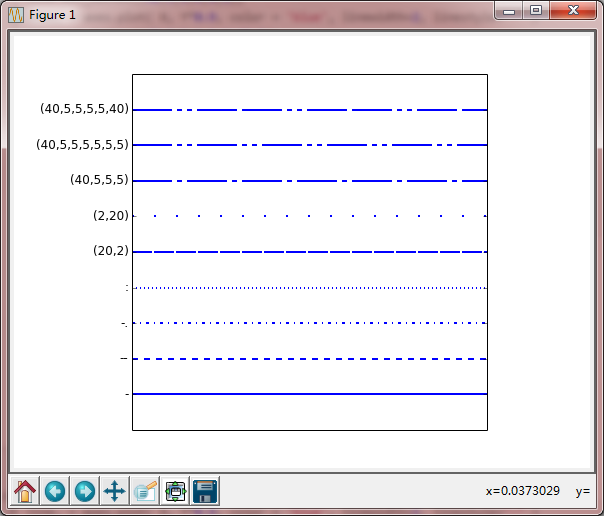
自动设置线颜色
code
#!/usr/bin/env python # -*- coding: utf-8 -*- import numpy as np import matplotlib import matplotlib.pyplot as plt # Data to be represented Y = np.linspace(0,1,12) X = np.ones(Y.size) # Actual plotting fig = plt.figure(figsize=(8,6), dpi=72, facecolor="white") axes = plt.subplot(111) lineNumbers=9 for i in range(lineNumbers): axes.plot( (1+i)*X, Y, linewidth=4) axes.set_xlim(0,lineNumbers+1) axes.set_yticks([]) axes.set_xticks(np.arange(1,lineNumbers+1)) plt.show()
Keypoints
这里用循环绘制了9条直线,但是这里是自动填充颜色的?Result
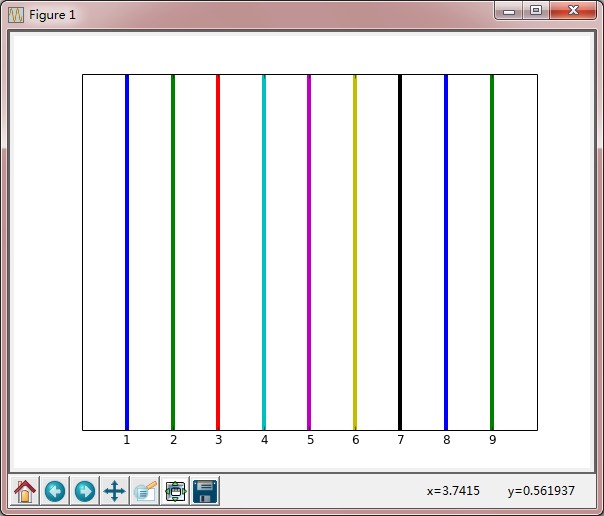
5. 点的显示形式
code
#!/usr/bin/env python # -*- coding: utf-8 -*- import numpy as np import matplotlib import matplotlib.pyplot as plt # Data to be represented Y = np.linspace(0,1,12) X = np.ones(Y.size) markers = ['.',',','o','v','^','<','>','1','2','3','4', 's','p','*','h','H','+','x','D','d','|','_', r'$\clubsuit$'] # Actual plotting fig = plt.figure(figsize=(8,6), dpi=72, facecolor="white") axes = plt.subplot(111) for i,marker in enumerate(markers): axes.plot( (1+i)*X, Y, color = '0.9', linewidth=1, markersize = 13, marker=marker, markeredgecolor = '0.10', markerfacecolor = '0.75') axes.set_xlim(0,len(markers)+1) axes.set_ylim(Y.min(),Y.max()) axes.set_yticks([]) axes.set_xticks(np.arange(1,len(markers)+1)) axes.set_xticklabels(markers) plt.show()
Keypoints
axes.plot( (1+i)*X, Y, color = '0.9', linewidth=1, markersize = 13, marker='x', markeredgecolor = '0.10', markerfacecolor = '0.75')
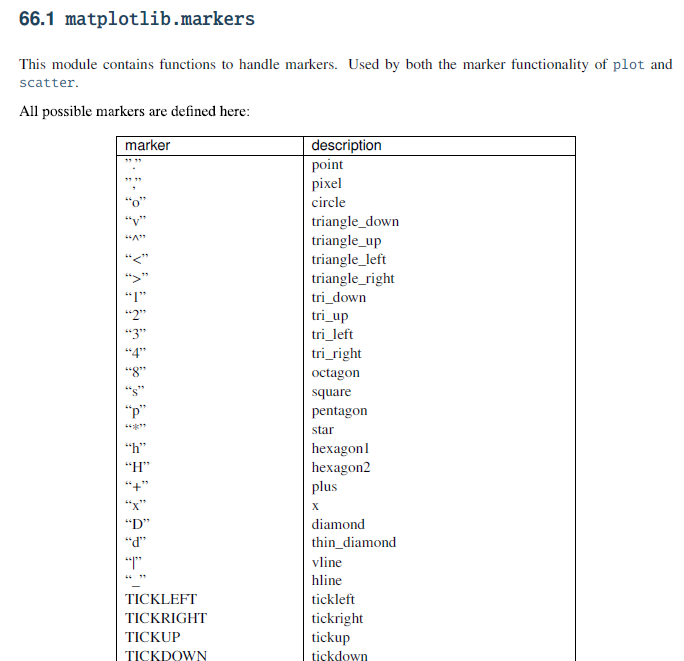
标记的大小,类型,边缘颜色,前景色
Resutl
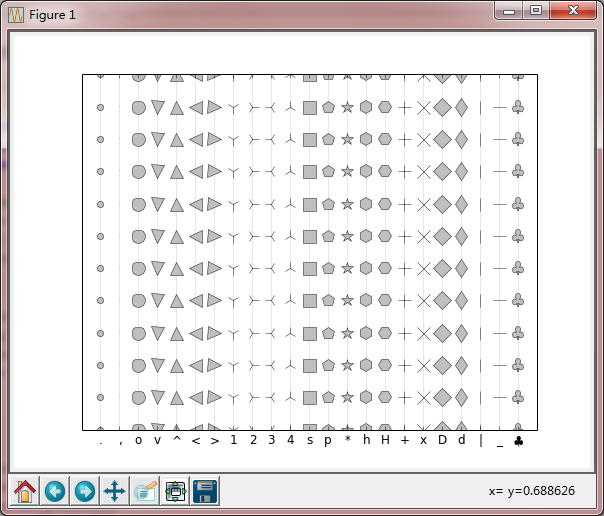
6. 柱状图及其填充
code
#!/usr/bin/env python
# -*- coding: utf-8 -*-
import numpy as np
import matplotlib
import matplotlib.pyplot as plt
# Data to be represented
X = np.linspace(0,1,10)
Y = np.ones(X.size)
patterns = ('/','//','-', '+', 'x', '\\', '\\\\', '*', 'o', 'O', '.')
# Actual plotting
fig = plt.figure(figsize=(8,6), dpi=72, facecolor="white")
axes = plt.subplot(111)
for i,pattern in enumerate(patterns):
axes.bar( .5+i, 1, hatch=pattern, color='white', edgecolor='blue',)
axes.set_xlim(0,len(patterns)+.5)
axes.set_ylim(0,1)
axes.set_yticks([])
axes.set_xticks(np.arange(1,len(patterns)+1))
axes.set_xticklabels(patterns)
plt.show()Keypoints
axes.bar( .5+i, 1, hatch=pattern, color='white', edgecolor='blue',)
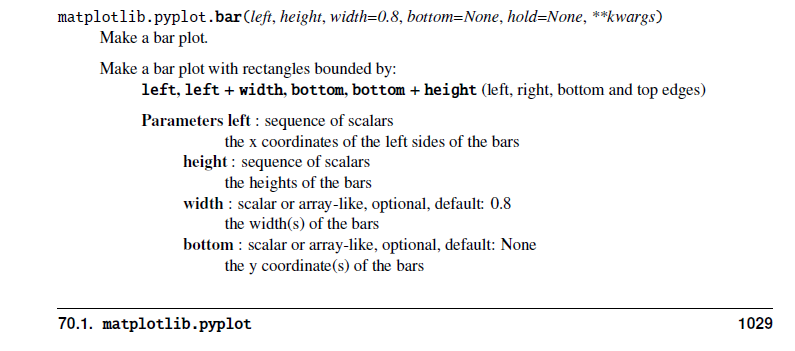
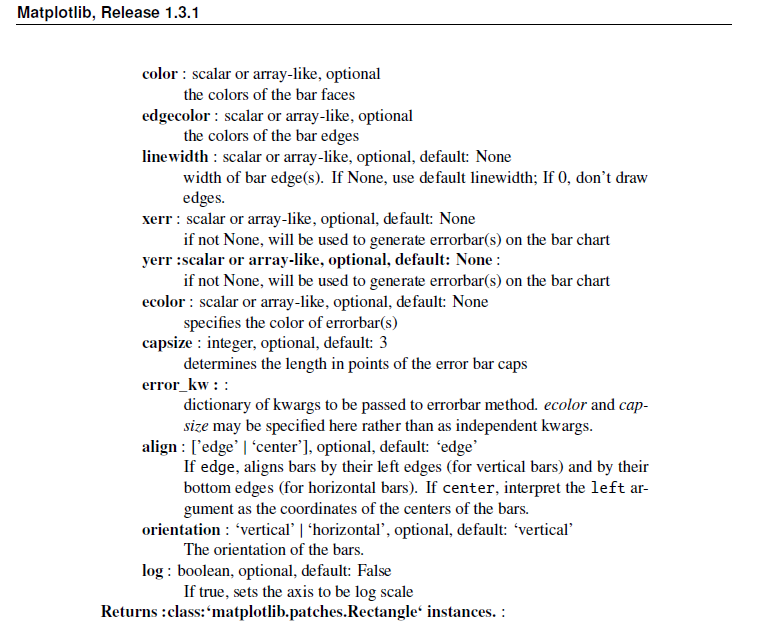
hatch,柱状图的填充:
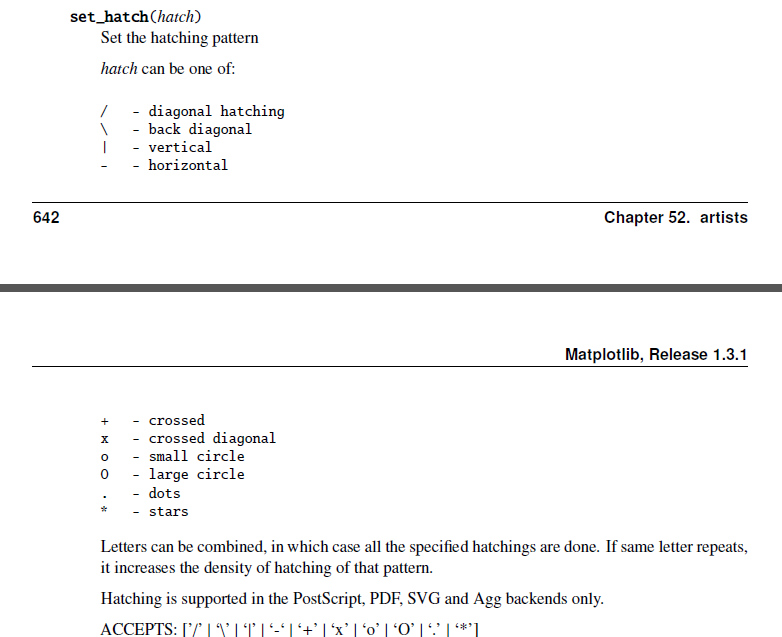
Result
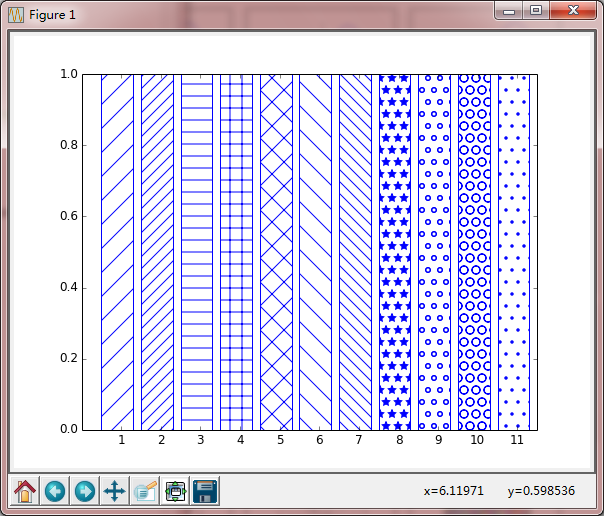
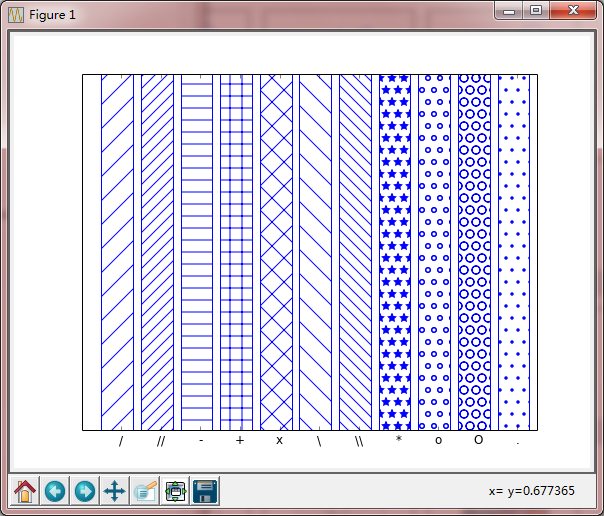
相关文章推荐
- matplotlib 可视化 —— 定制画布风格 Customizing plots with style sheets(plt.style)
- 样式美化(matplotlib.pyplot.style.use)
- 【python数据挖掘课程】十.Pandas、Matplotlib、PCA绘图实用代码补充
- matplotlib快速入门教程
- matplotlib命令与格式:图像(figure)与子区域(axes)布局与规划
- 为何学习matplotlib-【老鱼学matplotlib】
- 在mac下安装matplotlib,xlrd
- matplotlib绘图,图标注释(2)
- matplotlib.pyplot
- matplotlib基本使用方法示例
- Py2exe 打包 Python项目(traits、traitsui、matplotlib)
- Windows下怎么配置python的matplotlib环境
- PyQt5+OpenCV+Matplotlib 基础操作教程代码
- Python学习之Matplotlib (一)
- python matplotlib安装问题解决方案
- 4000 Pycharm中使用matplotlib绘图不能显示
- matplotlib散点数据-【老鱼学matplotlib】
- Python--matplotlib绘图可视化知识点整理
- matplotlib的subplot使用
- matplotlib 可视化 —— cmap(colormap)
